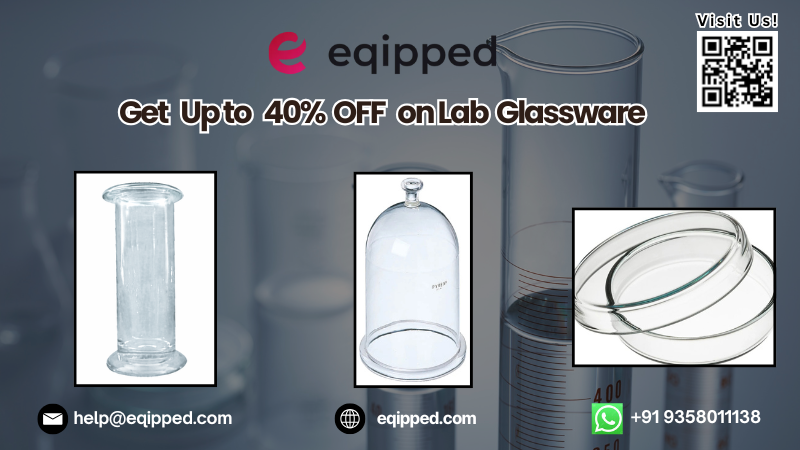Laboratory Glassware: The Cornerstone of Modern Science Education

Science is not just about reading theories—it is about experimenting, observing, and discovering. For students, especially in schools and colleges, the laboratory is where curiosity meets practice. One of the most vital tools in these learning spaces is laboratory glassware. From beakers and flasks to test tubes and pipettes, glassware makes it possible to carry out experiments with accuracy and safety. In fact, the history of scientific progress is deeply tied to the evolution of glassware, and today, its role in education remains more important than ever.
The Importance of Laboratory Glassware in Schools
In schools, laboratory glassware introduces students to the very basics of scientific experimentation. Simple experiments such as mixing acids and bases, heating solutions, or preparing salt crystals rely on beakers, flasks, and petri dishes. For young learners, handling glassware provides a sense of responsibility and excitement. It makes science more interactive, ensuring that students move beyond rote learning to hands-on exploration. This experience not only enhances understanding but also inspires many students to pursue careers in science.
Laboratory Glassware in College and University Education
At the college and university level, the use of laboratory glassware becomes far more advanced. Students studying chemistry, biology, physics, or environmental science depend heavily on specialized glassware. For example, burettes and pipettes are essential for titrations in chemistry, while conical flasks and measuring cylinders ensure accurate solution preparation. In microbiology labs, petri dishes, slides, and culture tubes play a central role in studying microorganisms. For medical and pharmaceutical students, glassware allows precise formulation, synthesis, and analysis, bridging the gap between theory and professional practice.
Digital Learning and Smart Glassware: A Modern Trend
One of the trending developments in science education is the integration of technology with laboratory glassware. Smart sensors are now being combined with traditional glass equipment to measure temperature, pressure, or pH levels in real time. In schools and colleges, these innovations help students not only perform experiments but also record and analyze data digitally. Additionally, virtual labs often include simulated glassware, preparing students for actual hands-on work. This combination of real and virtual learning is revolutionizing science education across the globe.
Laboratory Glassware and STEM Education
The global push for STEM (Science, Technology, Engineering, and Mathematics) education has highlighted the role of laboratory glassware as a central teaching tool. Glassware enables students to design projects, conduct investigations, and solve real-world problems. Whether testing water quality in environmental studies, experimenting with renewable energy concepts, or analyzing food samples, laboratory glassware gives students the resources to explore and innovate. This hands-on engagement is critical in developing creativity, critical thinking, and analytical skills.
Eco-Friendly Laboratory Glassware: A Sustainability Trend
Sustainability is now at the forefront of education, and laboratory practices are no exception. Schools and colleges are shifting towards eco-friendly glassware, encouraging reuse and proper disposal of broken or outdated pieces. Unlike plasticware, which often contributes to waste, glassware is highly reusable after cleaning and sterilization. This makes it both cost-effective and environmentally friendly. Many institutions are even introducing lessons on sustainable lab practices, teaching students how responsible use of laboratory glassware can contribute to greener science.
Safety and Skill Development with Laboratory Glassware
One of the most significant aspects of using glassware in education is safety. Schools and colleges emphasize correct handling techniques to prevent accidents such as spills, burns, or breakages. By learning how to use test tubes, flasks, and condensers properly, students also develop important laboratory skills like precision measurement, observation, and patience. These transferable skills are valuable not only in scientific fields but also in day-to-day problem-solving.
Laboratory Glassware Beyond the Classroom
Interestingly, laboratory glassware is not confined to classrooms and research labs. Science workshops, community outreach programs, and even science museums are increasingly using glassware demonstrations to engage young minds. Simple experiments using colorful reactions or crystal growth in beakers often go viral on social media, sparking public interest in science. This trend highlights how glassware can make science more accessible and exciting, bridging the gap between academic education and public curiosity.
The Future of Laboratory Glassware in Education
The future of laboratory glassware in schools and colleges is closely tied to innovation and accessibility. 3D printing technology, for instance, is being explored to create customized glassware at lower costs. Integration with artificial intelligence (AI) may soon allow smart beakers and flasks that can guide students step by step through experiments. As education becomes increasingly digital, laboratory glassware will continue to evolve while retaining its core purpose: enabling hands-on discovery and scientific learning.
Why Laboratory Glassware Is a Trending Topic
The reason why laboratory glassware has strong viral potential lies in its visual and practical appeal. Social media platforms are filled with mesmerizing videos of chemical reactions, crystal formation, or microbiology studies—all made possible through glassware. In education, discussions about sustainability, safety, and STEM learning are making laboratory glassware a trending topic among educators, students, and parents alike. The ability to connect science to real-life skills and global issues makes this subject highly shareable and impactful.
Conclusion
In conclusion, laboratory glassware remains the cornerstone of science education, from inspiring curiosity in schoolchildren to supporting advanced research in universities. Its versatility, precision, and adaptability make it one of the most essential resources in the learning process. With trends such as digital integration, sustainability, and STEM innovation shaping the future, laboratory glassware is no longer just a tool—it is a symbol of hands-on learning and scientific progress. As classrooms evolve into smart, sustainable learning spaces, the humble beaker or test tube will continue to open doors to discovery, innovation, and inspiration.








